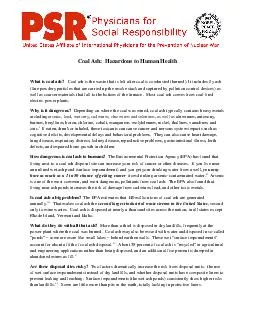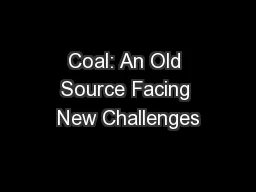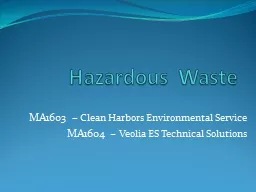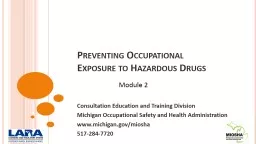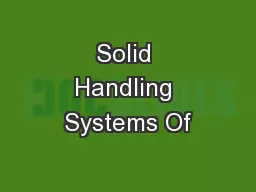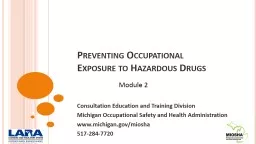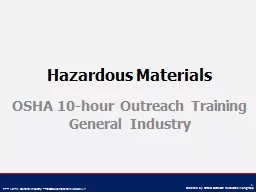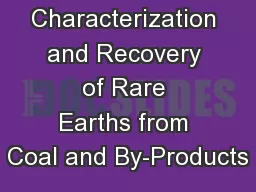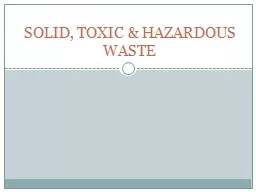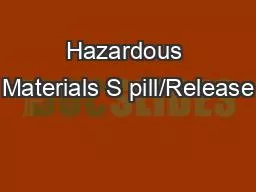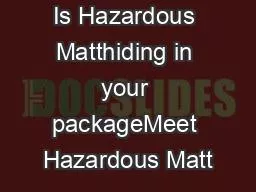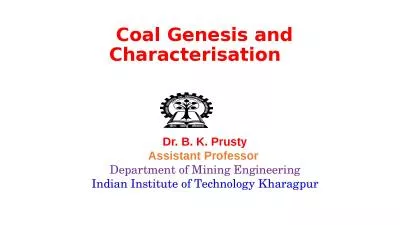PDF-Coal Ash Hazardous to Human Health What is coal ash Co
Author : marina-yarberry | Published Date : 2015-04-07
Most coal ash comes from coal fired electric power plants Why is it dangerous Depending on where the coal was mined coal ash typically contains heavy metals including
Presentation Embed Code
Download Presentation
Download Presentation The PPT/PDF document "Coal Ash Hazardous to Human Health What ..." is the property of its rightful owner. Permission is granted to download and print the materials on this website for personal, non-commercial use only, and to display it on your personal computer provided you do not modify the materials and that you retain all copyright notices contained in the materials. By downloading content from our website, you accept the terms of this agreement.
Coal Ash Hazardous to Human Health What is coal ash Co: Transcript
Download Rules Of Document
"Coal Ash Hazardous to Human Health What is coal ash Co"The content belongs to its owner. You may download and print it for personal use, without modification, and keep all copyright notices. By downloading, you agree to these terms.
Related Documents

